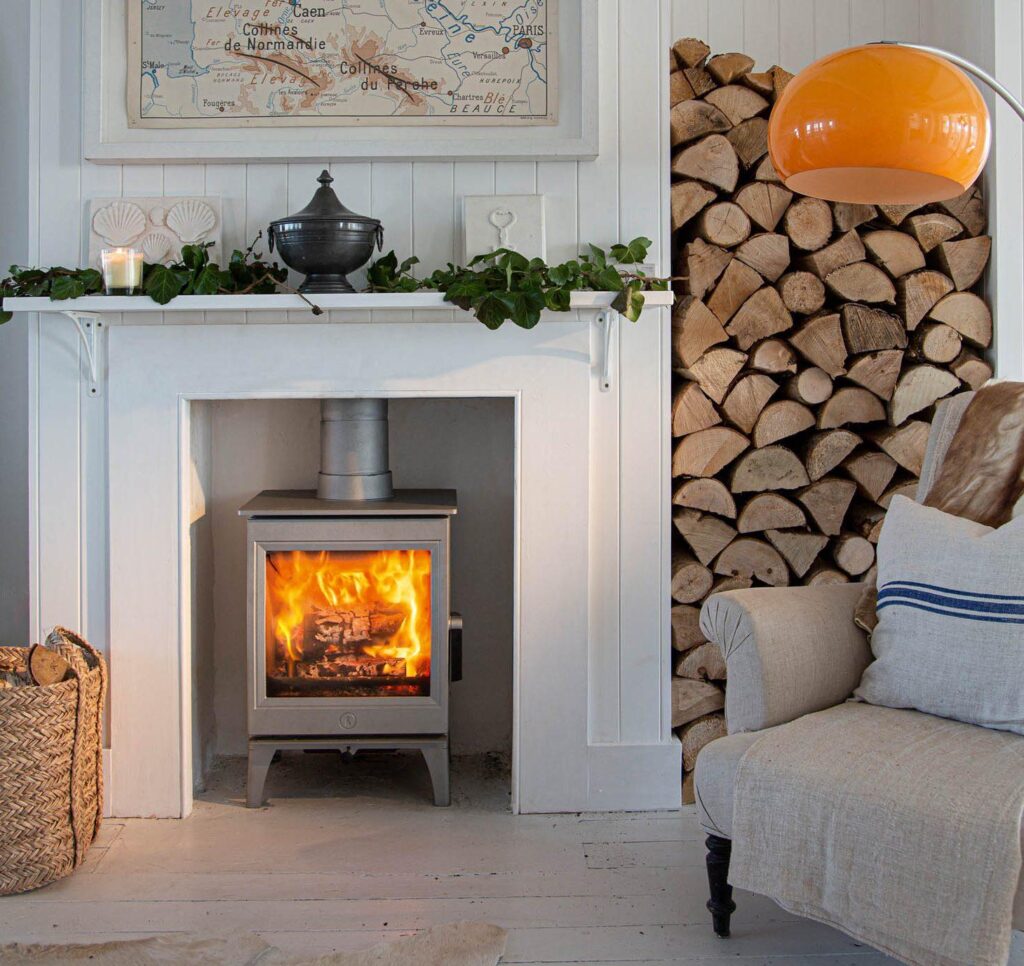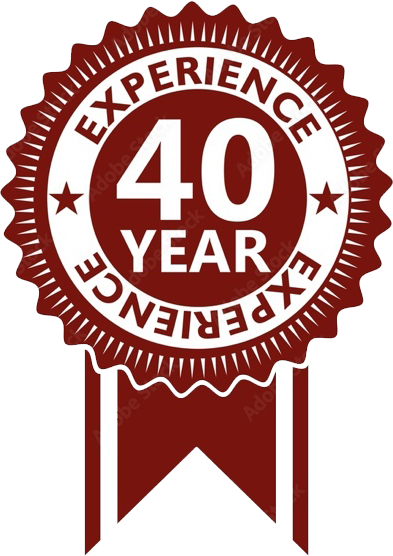At Evans we have been fitting all types of fires and fireplaces for 44 years, it is a subject that has fascinated right me from the first week. I, Bill Evans the owner and founder of Evans Fireplaces get immense pleasure from seeing the finished product in the right setting. After many years of designing, building and installing fireplaces in all types of styles and shapes and in all types of rooms; I hope to pass on some of my experiences here.
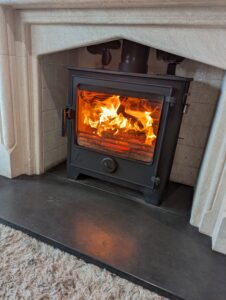
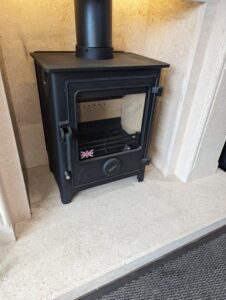
There is nothing to beat the atmosphere, cosiness and heat a stove creates, if you haven’t had one before you are in for a treat, many of my customer’s tell me it is the best improvement they have made to their house. They are nothing like the old inefficient messy open fires that we used to have. Open fires are about seven times less efficient and more than 200 times more polluting than stoves. If you already have one fitted you can still buy spares for them.
Wood burner or Multifuel stove?
You can burn coal and wood in a M/fuel burner, you can’t burn coal in a wood burner, coal needs air from underneath to burn. Therefore M/Fuel burners have a grid and ashpan whereas wood just burns off the floor of the stove. Coal gives off more ash than wood and needs emptying more often.
Coal does have some benefits; if you want to keep the fire on overnight or if you must go out for a few hours the fire will stay on with coal wood will burn out in a couple of hours. Good quality coal burns 9 hours or longer if the airflow is regulated. Whereas logs will burn out after about an hour or two.
I recommend having a good base of coal then putting logs on as needed.
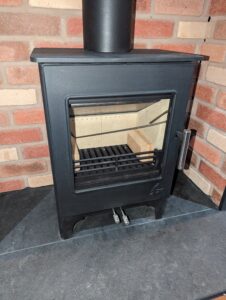

Controls
Most stoves now have a tertiary air inlet, this is a series of holes at the back of the stove that reignites anything that is going up the chimney unburnt, you will see jets of flames coming towards you.
M/fuel stoves have two other air inlet’s, primary air which draws air in through the bottom of the stove under the grid and is used to control the fire, fully open when lighting the fire and reduced as the fire gets going or is established. The top vent is air wash this cleans the screen by burning off carbon, this is usually kept fully open, however it is adjustable. It works when the stove reaches a high temperature by burning off the carbon.
If you put your hand in front of the glass when the fire is fully on, you can feel the heat on your hand increase as you close down the primary air. Slowing down the primary air reduces the amount of air/heat being lost up the chimney!
Wood burners have tertiary air and one other control, called air wash, the same as M/Fuel and cleans the screen by burning the carbon off of the screen but it also feeds the fire, wood is burnt from the top. A good point to mention here is that some chimneys just work slower than others dependant on the chimney positioning or wind in the area.
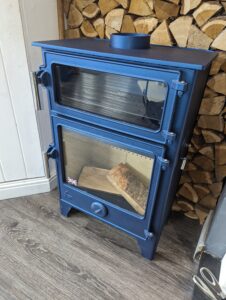
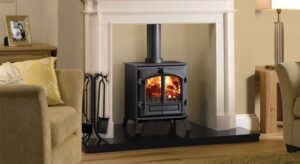
Do I need a chimney liner?
There is a lot of nonsense on the internet about liners, most people think it’s a necessity or a legal requirement, but it is not. The fact is, if your chimney is working you don’t need a liner, we only fit them in about 1 in 20 jobs, you’re putting a fire in a chimney which has been built to have a fire. If your chimney isn’t working properly, it can be fixed most of the time by pointing up the chimney, it is usually a bit of loose pointing that needs redoing! A small hole can cause the chimney to fail. Chimneys work on the principle that warm air rises and cold air drops, if your chimney has the smallest hole in it the cold air will be drawn in, the smoke will cool and drop back down, you will then know instantly that the chimney is not working, smoke will be coming out through the stove. All chimneys built from 1964 have a pot liner inside (building regs) and work very well, in fact I haven’t come across one that doesn’t work in 44 years of fitting fireplaces, unless there are other problems. Generally, much older chimney’s also work very well.
Some retailers genuinely believe you need a liner; however, there are retailers who want to make a bigger sale by telling you it’s safer, more efficient or a legal requirement, the truth is, it doesn’t make the fire safer and only makes it marginally more efficient, if at all. Smoke is not as dangerous as many people think, you can see it and smell it whereas in a gas fire if you had a carbon monoxide leak you would not be able to smell or see it.
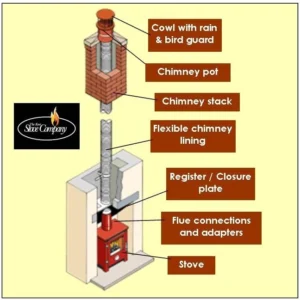
‘Stoves banned’ Misleading Headline
In 2019/20 national newspaper’s ran a headline which read “Stoves Banned”, which lead many people to believe that all stoves had been banned, what it should have said is “Some Stoves Banned!” The article went on to explain the new government guidelines from 2022 all stoves must be tested and achieve certain efficiencies, if they didn’t reach this efficiency they would be banned, this does not include stoves that have already been installed prior to that date. Most companies that supply stoves have them tested by independent DEFRA approved testing centres. They also said that you must be registered to sell wood and coal, which also had to comply with regulations. All good rules apart from one. Which says if you have stock of untested stoves, you are still allowed to sell them. 3 good rules, and one bad one! It meant that companies with warehouses full of them, shipped in mainly from China or India could still sell them. Now you have a situation where retailers won’t buy them because of the rules, so it now leaves the big importers in a situation where they have stoves to sell them and have flooded the internet trying to get rid of them. There is a good reason they are cheap!
What type of fuel?
Good quality coal is currently about £15.00 for 20kgs there are cheaper coals, you will get a lot more ash and a lot less heat. For an average stove this should last about a week, just a few smallish shovels in the morning to get a good base should be enough for a day, then you can load up for overnight burning, if you do this close down the primary air, if the stove has gone out overnight, it’s because you have a good draw on your chimney and you may need to slow down the air flow! It is important that wood is dry, a 20% moisture content is recommended, silver birch gives off good heat, but Ash and Oak are slower burning, therefore last longer. I have attached a separate sheet with more information on the properties of different types of wood.
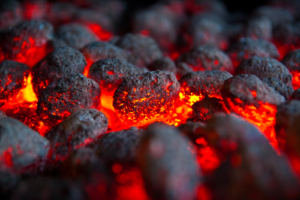
Lighting a fire.
I use a good quality firelighter, a couple of handfuls of kindling thinner pieces of kindling over the firelighter this will spread the fire quicker and 2/3 logs over the top. I open the primary air and airwash and if necessary, I leave the stove door very slightly open to draw air through for a couple of minutes, then close it. (in the old days we used a sheet of newspaper to light the old open fires) When the fire is established and burning well, add in a few small shovels of coal, depending on the size of your stove, when that’s going add logs as and when needed.
Other Chimney Problems
In my experience 99% of Chimneys work well and cause no problem’s, The 3 most common problems:
1. Holes in chimney causing cold air to cool fumes. Cure, point the chimney up.
2. Air being pulled into the room by other sources, an extractor fan another fire or boiler you can test this by putting the back of hand against the opening and you will feel cold air, the cure ,try opening a window in the room, if air is being drawn into the room because of a boiler or appliance it will always pull it from the nearest source so you may need to fit an air vent close to the appliance.
3. Cold Chimney, if the stove door has been closed for a while the chimney gets cold and needs warming up the cure is to burn some loose newspaper to warm the chimney.
In my shop I have three old chimney all over 120 years old except for one which had to be metal lined because it is shot permanently damp because of where it terminates, and it’s a big job to point it up. The metal flue gets very cold plus the other two stoves burning to cure it I open the shop door to reduce the pull and burn a full loose newspaper over the top of the prepared fire, then quickly light the newspaper and the firelighter at the bottom of fire and it works.

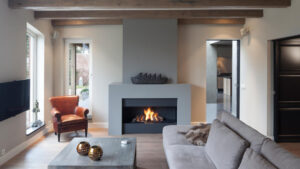
What type of wood can I burn?
Alder: Poor in heat and does not last very long
Apple: Splendid it burns slowly and steadily when dry, with little flame but good heat. The sent is pleasing
Ash: Best burning wood. Has both flame and heat, it will burn when green though not best as well as when it is dry
Beech: Fair when green. If it has a fault, it is apt to shoot embers a long way
Birch: The heat is good, but it burns quickly. The smell is pleasant
Cedar: Good when dry. Full of snap and crackle. it gives a little flame but not much heat. The scent is beautiful
Cherry: Burns slowly with goo heat. Another wood with the advantage of scent
Chestnut: Mediocre. Apt to shoot embers. Small flame and heating power
Doulas Fir: Poor. Little flame or heat
Elder: Very smoky and quick burner with not much heat
Elm: Commonly offered for sale. To burn well it needs to be kept for two years. Even then it will smoke. Vary variable fuel
Hazle: Good
Holly: Good, will bun when green, but best when kept a season
Hornbeam: Almost as good as beech
Laburnum: Totally poisonous tree. Never burn this wood
Larch: Crackly, Scented and fairly good for heat
Laurel: Has brilliant flame
Lime: Poor, burns with dull flame
Maple: Good
Oak: Sparce in flame and the smoke is acrid, but dry old oak is excellent for heat, burning slowly and steadily until the whole log collapses into cigar-like ash
Pear: A good heat and a good scent
Pine: Burns with a splendid flame but apt to spit. The resinous Weymouth pine has a lovely scent and a cheerful blue flame
Plane: Burns pleasantly but is apt to throw sparks if very dry
Plum: Good heat and aromatic
Poplar: Truly awful
Rhododendron: The thick old stems being very tough to burn well
Robinia (Acacia): Burns slowly with good heat but with acrid smoke
Spruce: Burns to quickly and with too many sparks
Sycamore: Burns with a good flame with moderate heat. Useless green
Thorn: One of the best woods. Burns slowly with great heat and little smoke
Walnut: Good and also has a nice scent aromatic wood.
Willow: Poor it must be dry to use and then it burns slowly with little flame apt to spark
Yew: Among the best. Burns slowly with fierce heat and the scent is pleasant
